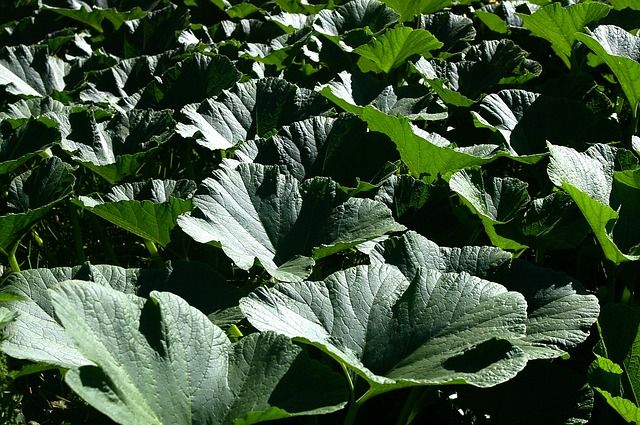
Protection of indigenous crops, vegetables key to hunger eradication » Capital News
This year’s World Food Day is dedicated to “The Right to Food for a Better Life
and a Better Future.” Ensuring access to diverse and nutritious foods is a fundamental issue that calls for collective action. We must ensure that all farmers,
particularly smallholder farmers, have access to essential resources like land, seeds,
and other inputs to feed the world.
While several African countries have made significant progress in achieving the
Malabo Declaration of 2014 and SDG 2 – Zero Hunger, a 2024 report by FAO, IFAD,
UNICEF, WFP, and WHO reveals that Sub-Saharan Africa leads in the prevalence of
undernourishment. The situation has worsened since 2015. In 2022, Eastern Africa
recorded a 29% prevalence of undernourishment, while 69.2% of the population
experienced moderate or severe food insecurity (FAO, AUC, ECA, & WFP, 2023).
These statistics highlight the urgent need for all actors in the food system to
collaborate and find innovative solutions to combat this crisis.

The right to food in Eastern Africa is compounded by numerous challenges, including rapid population growth, agricultural biodiversity loss, and the unpredictable impacts of climate change. However, indigenous crops and vegetables offer a valuable solution by providing a diverse, nutritious food base. Their role in enhancing food security cannot be underestimated.
Indigenous crops and vegetables are well-suited to local conditions, requiring fewer
inputs to thrive. These crops have been passed down through generations, with
some becoming fully naturalized, creating local landraces that are highly acclimated
(Kimani, Mayer, & Swiderska, 2020). They are resistant to drought, pests, and
diseases, reducing the need for synthetic agrochemicals (Laborde, Murphy,
Porciello, & Smaller, 2020).
Biodiversity Conservation: Indigenous crops and vegetables come in a wide range
of varieties, making them a versatile source of healthy diets. They are also key to
preserving cultural diversity, as many local communities have historically used these
crops in traditional ceremonies and celebrations.
Enhancing Ecosystem Services: A more diverse agricultural system allows for
improved ecosystem services such as pollination, nutrient cycling, climate regulation, and better water and soil quality (Bokelmann, Huyskens-Keil, Zoltan, & Silke, 2022).
Nutritional Value: Research shows that indigenous crops and vegetables are rich in
micronutrients and often have medicinal properties. For example, a study by
Abukutsa-Onyango et al. (2016) found that nightshade and cowpea provide sufficient protein and iron to meet daily recommended intake levels, contributing significantly to improved nutrition.
Employment Opportunities: As awareness of the nutritional value of indigenous
crops grows, so does demand. This creates opportunities for smallholder farmers to
expand production and tap into the growing urban market. These crops are also fast
maturing, offering young people a promising entry point into agricultural
entrepreneurship.
To harness the full potential of indigenous crops and vegetables, the following
actions are essential:
1. Conserve Genetic Resources: It is vital to protect the genetic diversity of
indigenous crops by conserving germplasm in gene banks, botanical gardens,
and on farms to maintain agro-biodiversity.
2. Invest in Seed Production: Ensuring farmers have access to high-quality
seeds is crucial for food sovereignty. This requires maintaining the genetic
purity of indigenous crops, from seed selection through harvesting and
storage.
3. Support Farmer-Led Seed Systems: Farmers have vast knowledge of local
crop varieties and have been saving and exchanging seeds for generations. It
is important to preserve this knowledge and food heritage for future
generations.
4. Increase Nutritional Awareness: Promoting the consumption of nutrient-
dense indigenous crops and vegetables through education is essential.
Consumers must be informed about the availability and nutritional benefits of
these varieties.
5. Develop Sustainable Production Practices: Farmers need training not only
in growing indigenous crops but also in harvesting, value addition, and
establishing market linkages.
6. Enhance Research and Development: Research plays a critical role in
understanding the germination, regeneration, and propagation of indigenous
crops. It also helps in domesticating wild species with high nutritional value.
7. Invest in Value Addition and Marketing: Processing indigenous crops
ensures year-round availability, improves food safety, and boosts
sustainability. Traditional preservation methods, like drying, salting, and
fermenting, combined with modern climate-smart technologies, offer
opportunities for community-based food processing.
The promotion of indigenous crops and vegetables is key to achieving food and
nutrition security in Eastern Africa. These crops not only offer a sustainable solution
to the region’s food challenges but also preserve biodiversity and cultural heritage.
By investing in seed systems, research, and farmer capacity-building, and by raising
awareness of the nutritional benefits of indigenous crops, we can create more
resilient and healthy communities for the future.
This article is co-authored by Dr. Monica Nderitu, Regional Environment and Climate Change Resilience Advisor at Vi Agroforestry, and Asina Yusuph Abas, Program Officer for Nutrition at COUNSENUTH.
About The Author